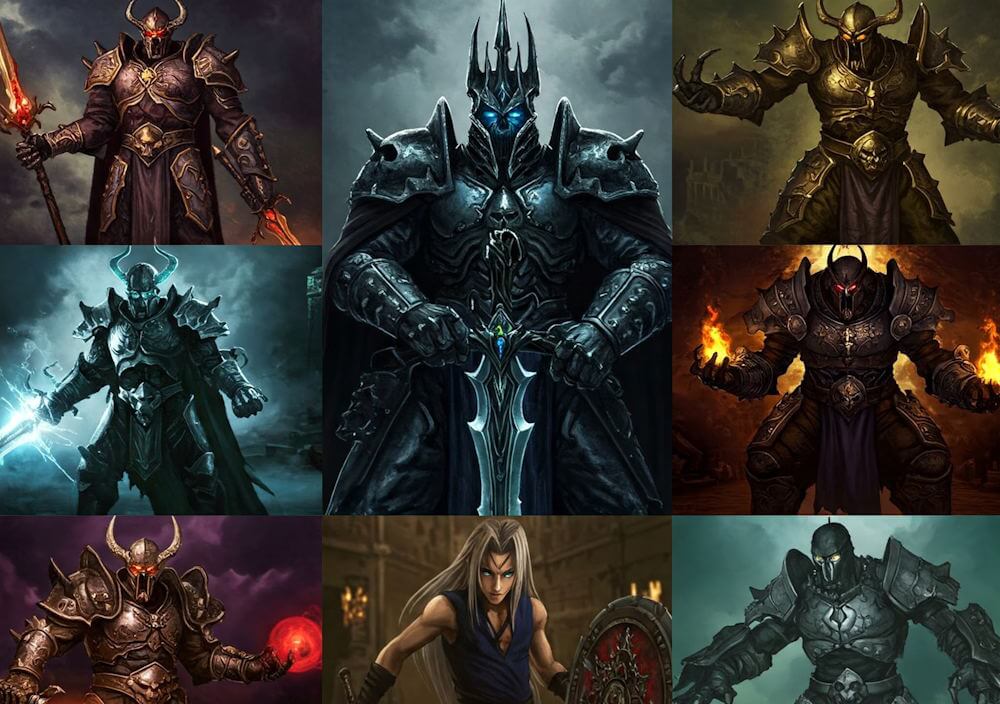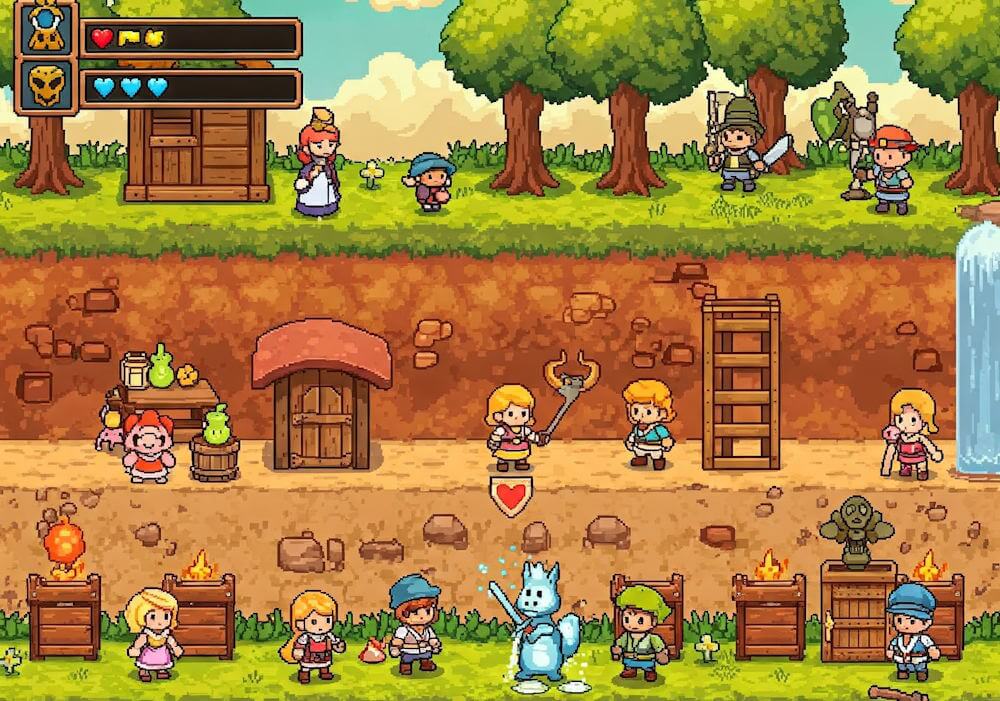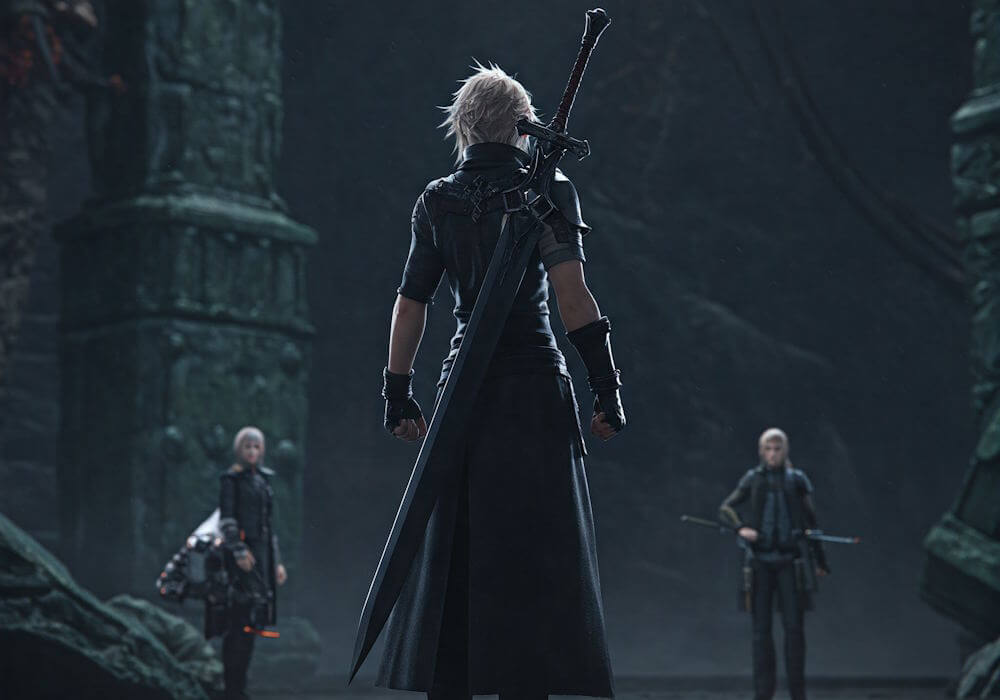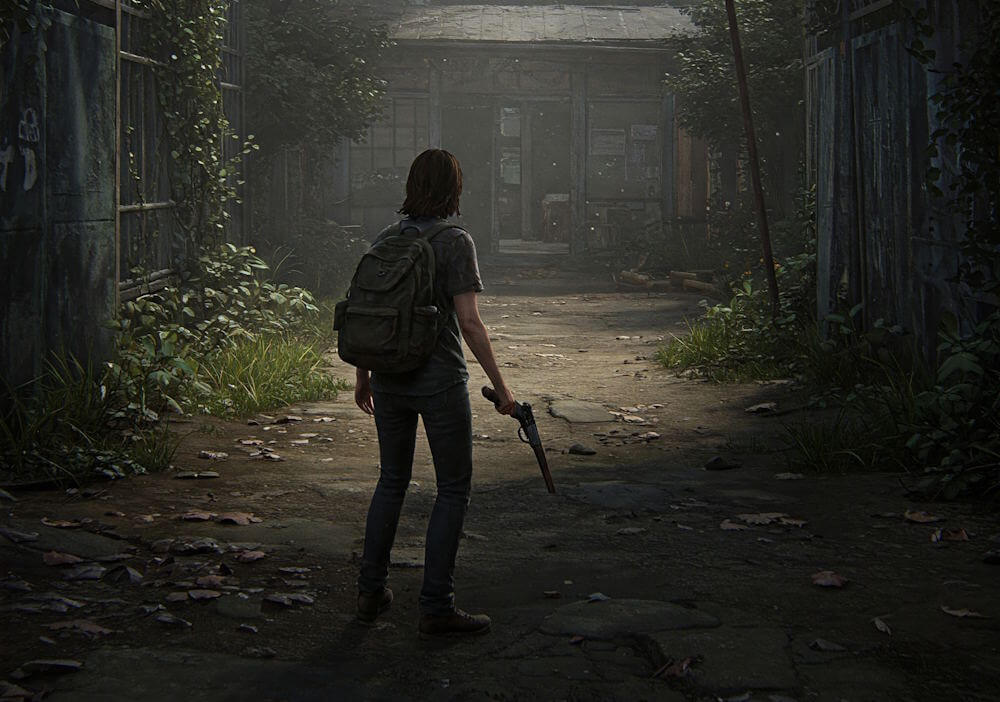In the realm of video games, boss battles are significant encounters designed to challenge players and elevate the overall gaming experience. These climactic moments often serve as the culmination of a game’s narrative arc, bringing players face to face with formidable opponents who typically possess unique abilities and strategies. The essence of a boss battle lies not only in its difficulty but also in how it encapsulates the story, character development, and thematic elements of the game.
From classic arcade titles to contemporary triple-A releases, boss battles have remained a staple of game design. They are strategically placed at crucial points in the gameplay, often marking the end of a level or the conclusion of a chapter. The excitement surrounding these encounters lies in their ability to test the skills of players, requiring them to adapt and employ the abilities they have developed throughout their journey. Each boss typically presents a distinctive challenge, compelling players to think critically and devise effective strategies to triumph.
The narrative significance of boss battles cannot be overlooked. They often reveal key elements of the story, such as a character’s backstory or the stakes involved in the central conflict. Engaging and memorable bosses can deepen players’ emotional investment in the game, making victory against them all the more satisfying. As such, these battles play a crucial role not only in gameplay mechanics but also in storytelling, enhancing the overall depth of the gaming experience.
As we explore the most memorable encounters in gaming history, it becomes clear that boss battles are not mere obstacles; they are intricate puzzles presented within the context of a larger narrative, each one contributing to the rich tapestry of what makes gaming an engaging and immersive medium.
The Evolution of Boss Battles
Boss battles have been a fundamental component of video games since their inception. In the early days of gaming, particularly during the 8-bit era, boss encounters were often straightforward. Players faced off against a single, powerful enemy that typically involved a few basic attack patterns. Iconic examples include the battles with Bowser in the Super Mario series or Ganon in The Legend of Zelda. These encounters, while simple, set the groundwork for what would become a crucial aspect of game design.
As technology advanced throughout the 16-bit and 32-bit eras, so too did the complexity of boss battles. Games like Street Fighter II introduced multi-phase encounters that required players to adapt their strategies as the fight progressed. The introduction of detailed animations and special abilities allowed for more dynamic battles, making the experience more immersive and challenging. Likewise, titles such as Mega Man featured creative bosses, each with unique designs and behaviors, compelling players to develop tactics for each encounter.
The evolution of gaming hardware in the late 1990s and early 2000s further transformed boss battles. Games such as Shadow of the Colossus showcased gargantuan enemies that required not just combat skill, but also puzzle-solving abilities to defeat. This shift toward more innovative battle mechanics reflected advancements in both graphics and game design practices. The narrative depth became intertwined with gameplay, as seen in games like Dark Souls, where boss battles served as pivotal narrative moments that often left a lasting emotional impact on players.
Today, boss battles feature intricate design elements, leveraging artificial intelligence and cooperative gameplay mechanics to create multi-faceted experiences. Titles such as God of War and The Legend of Zelda: Breath of the Wild exemplify this trend through their epic scale and emotionally charged confrontations. The continual evolution of boss encounters demonstrates not only advancements in technology but also the changing expectations of gamers, who now seek varied and engaging challenges that enhance their overall gaming experience.
Iconic Bosses and Their Impact
Throughout gaming history, iconic bosses have played a pivotal role in shaping player experiences and the overall narrative within various titles. These formidable adversaries often embody the thematic essence of the game, serving as catalysts for both plot development and character evolution. For instance, in the acclaimed title “Dark Souls,” the boss Ornstein and Smough are not only a test of skill but also symbolize the conflict between honor and betrayal within the game’s storyline. Their design and mechanics have left a lasting mark on the action RPG genre, inspiring numerous imitators.
Another remarkable boss is Bowser from the “Super Mario” franchise. As Mario’s arch-nemesis, Bowser’s evolution over the years—from a simple dragon-like creature to a multi-faceted antagonist with his own motivations—reflects changing gaming paradigms. His confrontations with Mario are not merely battles; they represent the ongoing struggle between good and evil, showcasing how character development can resonate with players over generations.
The impact of these iconic bosses extends beyond their respective games. They have fostered community discussions, inspired fan art, and established benchmarks for future game development. The battle mechanics, artistic styling, and narrative significance of these encounters often create a culture surrounding the games. For example, the boss fights in “The Legend of Zelda” series, particularly Ganon, have shaped the expectations for epic confrontations in action-adventure games, contributing to ongoing dialogues about gameplay design and storytelling.
Moreover, the memories associated with these encounters often linger long after the gaming experience has concluded, underscoring their influence on both players and the gaming industry as a whole. In examining the legacy of iconic bosses, it becomes evident that they not only challenge players but also contribute significantly to the evolution of gaming as a respected medium for artistic expression and storytelling.
Memorable Boss Battles by Genre
In the realm of video gaming, boss battles serve as climactic confrontations that often define the player’s experience. Different genres showcase unique approaches to these encounters, utilizing mechanics and narrative elements that are integral to gameplay. By categorizing these memorable boss battles, we can understand how distinct characteristics contribute to their impact.
In RPGs, boss battles frequently incorporate strategic elements that engage the player in tactical decision-making. Games such as “Final Fantasy VII” present layered mechanics where players must consider party composition and exploit enemy weaknesses. The final confrontation against Sephiroth is not only a battle of strength but also a culmination of character development, enhancing emotional stakes. RPGs often weave extensive narratives that foreshadow boss encounters, thereby elevating their significance.
Action-adventure games are known for their dynamic and visually stunning boss fights, characterized by quick reflexes and skillful execution. Titles like “The Legend of Zelda: Ocarina of Time” exemplify this through battles with formidable foes such as Ganon. The utilization of environmental elements, puzzle-solving mechanics, and the protagonist’s growth through the game contribute to the texture of these encounters. Each phase in a boss fight often reflects the advancement of the player’s abilities, creating a sense of accomplishment.
In the shooter genre, boss battles often emphasize gunplay and tactics, as seen in games like “DOOM.” Encounters with bosses such as the Cyberdemon require players to master the game’s mechanics, utilizing agility and precision to overcome challenges. Shooter boss fights often have a frenetic pace that contrasts typical gameplay, pushing players to adapt swiftly. The adrenaline-fueled nature of these battles is a significant aspect of their memorability.
Across these various genres, boss battles consistently feature elements that enhance the gaming experience, such as narrative integration, level design, and distinct mechanics. This diversity highlights the creativity of game developers and their ability to create memorable confrontations that resonate with players.
The Role of Music and Sound Design
In the realm of gaming, the auditory landscape significantly enhances the player experience, particularly during intense boss battles. Music and sound design serve not merely as background elements but as integral components that elevate the emotional stakes involved in confrontations with formidable opponents. Iconic soundtracks become synonymous with specific games and their climactic scenarios, often lingering in the minds of players long after the encounter has concluded.
The selection of music during a boss battle can amplify a sense of urgency, tension, and excitement. For instance, themes that feature fast-paced rhythms and sharp crescendos often accompany climactic moments, compelling players to engage with the fight on a deeper emotional level. This can evoke feelings of adrenaline and determination, making the battle memorable. Games such as “Dark Souls” and “The Legend of Zelda: Ocarina of Time” exemplify how meticulously crafted soundtracks can play a pivotal role in defining these pivotal moments, creating an immersive auditory experience that resonates with players.
Meanwhile, sound effects, such as the clash of swords or the growl of a beast, further enrich the atmosphere, providing critical feedback that reinforces the stakes of the battle. The timing and precision of these audio cues can heighten tension, delivering satisfaction or disappointment depending on the player’s actions. Subtle audio elements, like the fading echo of a previously heard melody, can elicit nostalgia or foreboding, adding layers to the overall emotional narrative of the gameplay.
Moreover, sound design contributes to the psychological effects of player engagement during these battles. Detectable shifts in music or the introduction of unique sound motifs can signal impending danger or a pivotal moment in the encounter. The interplay between music and sound effects thus forms a crucial partnership, immersing players in an experience that is not just fought—it’s felt. This fusion of sound and gameplay serves to create memorable encounters that cement the status of these battles in gaming history.
Player Strategies and Tactics
Boss battles often represent some of the most challenging segments in video games, demanding players to utilize a variety of strategies and tactics to succeed. A common approach employed by players is timing management, particularly in combat scenarios where attacks can be timed for maximum effectiveness. Understanding enemy attack patterns is vital, as recognizing the rhythm allows for well-timed dodges and counters, ensuring that players can chip away at the boss’s health without suffering unnecessary damage.
Pattern recognition plays a pivotal role in defeating memorable bosses. Every formidable foe typically exhibits distinct attack sequences that can be observed and analyzed. Experienced players often spend time studying these patterns to anticipate their opponent’s next move, a tactic that pays dividends during intense confrontations. Once familiar with the attack cues, players can craft a strategy that may involve a mix of offensive strikes during vulnerable phases, followed by defensive maneuvers when the boss unleashes its most devastating abilities.
Resource management is another significant aspect of tackling boss battles. Players must strategically utilize health potions, mana, or special abilities during encounters to maximize their chances of victory. Content creators often advocate for thorough inventory management and the optimal use of items that can provide the upper hand. For instance, saving powerful spells or bombs for critical moments can turn the tide in battle. Additionally, the careful planning of character builds tailored to specific bosses may enhance effectiveness, emphasizing the importance of preparation ahead of the fight.
Overall, effective player strategies during boss battles often combine all three elements: timing, pattern recognition, and resource management. Mastery of these tactics not only improves individual performance but can also transform the experience, making victories over such challenging foes even more gratifying.
Memorable Boss Battles in Cooperative Games
Cooperative gaming has long been celebrated for its ability to foster teamwork and camaraderie among players, particularly during intense boss battles that require synchronized efforts and strategic collaboration. The complexities involved in these encounters often elevate the overall gaming experience, creating compelling scenarios that leave a lasting impression on participants. Titles such as “Dark Souls” and “Monster Hunter: World” exemplify this dynamic, presenting challenges that necessitate a blend of skill, communication, and unwavering support from teammates.
In “Dark Souls,” for instance, players frequently confront formidable bosses that not only test individual prowess but also demand effective coordination among players. The encounter with the “Dragon Slayer Ornstein and Executioner Smough” is a quintessential example. This battle requires players to manage the distinct attack patterns of both bosses, compelling them to strategize their positioning and timing to succeed. Failure to communicate effectively can lead to rapid demise, necessitating a collective effort to strategize and execute a unified plan.
Similarly, in “Monster Hunter: World,” boss encounters often involve multi-faceted mechanics and environmental interactions that enhance the immersive experience. The battle against “Nergigante” showcases how players must leverage their unique classes, weapons, and abilities to manipulate the battlefield effectively. The requirement for players to adequately manage health resources, engage in real-time decision-making, and share information about the boss’s behaviors exemplifies the uniqueness of cooperative boss battles, creating moments that are both intense and rewarding.
The social aspect of these gaming experiences cannot be overstated, as overcoming a challenging boss can lead to a significant sense of achievement. The shared excitement, victories, and even moments of defeat contribute to the memorable nature of these cooperative encounters. Thus, the integration of teamwork in multiplayer boss battles not only enhances gameplay but also fosters lasting memories among players.
The Emotional Impact of Boss Battles
Boss battles are often seen as the pinnacle of gaming experiences, acting not only as a test of skill but also as a powerful emotional anchor in a game’s narrative. These confrontations frequently evoke a range of feelings, from overwhelming frustration to euphoric triumph. As players face formidable foes at crucial plot points, the stakes become particularly high, elevating the emotional impact significantly. Each victory not only represents a moment of accomplishment but often symbolizes a critical turning point in the story, binding the player more deeply to the narrative.
Take, for instance, the final boss battle in iconic titles like “The Legend of Zelda: Ocarina of Time.” Here, the culmination of the protagonist’s journey materializes in a challenging encounter with Ganondorf, where the player’s skill and emotional investment converge. Every move and decision in these climactic moments reflects years of storytelling and character development. The player feels the weight of their journey, amplifying the emotional investment as they strive to overcome the villain they have come to know through countless adventures.
Moreover, the frustration that often accompanies particularly challenging boss battles can be just as impactful. The journey to victory may involve multiple attempts, each failure serving to increase the narrative tension. Games like “Dark Souls” are renowned for their demanding bosses that require dedication and persistence. The struggle becomes not just a measure of skill but an exploration of resilience and growth. Players often experience a sense of catharsis in finally overcoming these formidable challenges, leading to powerful moments of relief and euphoria.
Through well-crafted narratives and emotionally charged gameplay mechanics, boss battles transcend mere conflict, allowing players to experience profound connections with the story and characters. This blend of narrative and challenge cultivates memorable gaming moments that linger long after the controller is set down, exemplifying the significant emotional impact these encounters hold within gaming history.
Conclusion: The Legacy of Boss Battles
Boss battles have long served as pivotal moments in gaming, marking the culmination of a player’s journey through a title. These encounters are not merely obstacles to overcome; they symbolize the challenges and triumphs that define the gaming experience. Each unique confrontation leaves a lasting impression on players, often becoming points of nostalgia that evoke both pride and excitement. Whether through complex mechanics, compelling narratives, or dramatic visual design, memorable boss battles have a way of resonating with gamers far beyond the confines of the virtual realm.
The significance of boss battles extends into the very fabric of gaming culture. They are celebrated for their ability to elevate gameplay, offering moments of tension and release that can be both exhilarating and frustrating. Gamers often recount the satisfaction of finally defeating a particularly tough boss, which serves not only as a personal milestone but also as a shared experience within the community. This shared affection for boss battles fosters discussions, fan art, and even speedrunning practices, highlighting the deep connection these encounters can forge among players.
Looking ahead, it is clear that the legacy of boss battles will continue to evolve. As technology advances and game design methodologies become more sophisticated, we can expect innovative approaches to how these significant encounters are crafted. From adaptive AI to immersive storytelling, the future of boss battles promises to enhance player engagement further. Thus, it is evident that boss battles will remain a cornerstone of gaming, ensuring that this dynamic aspect of play continues to captivate, challenge, and inspire gamers for generations to come.




